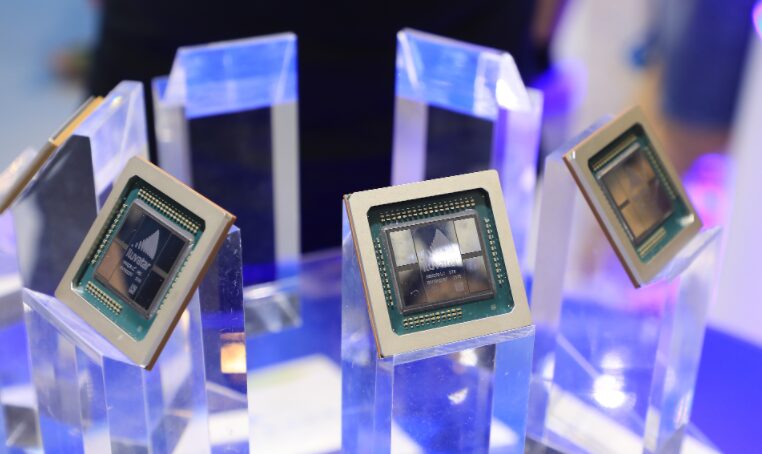Concepts You Should Know About Artificial Intelligence (AI)
Computing power refers to the ability to process data, as well as storage capacity, data transmission capabilities, and more.
Large models refer to machine learning models with a large number of parameters and complex computational structures.
Artificial neural networks are computational models that simulate the human brain’s neural system.
Algorithms are methods that integrate human logical thinking processes with computer computation processes to solve problems. They are the result of deep intersections between mathematics, logic, and computer science, as well as the fusion of human and machine.
Generative artificial intelligence utilizes complex algorithms, models, and rules to learn from large-scale datasets to create new original content. It can generate various types of content, including text, images, sounds, videos, and code.
“Brain” – Control Chips and Algorithms
The physiological basis of human intelligence is the brain, which has been continuously refined over a long evolutionary process. Humans are also the only known species capable of learning through abstract symbols such as language and writing.
The control chips and algorithms of intelligent robots are akin to the human brain and the process of continuous learning. Especially with the rapid development of chip technology, the performance of intelligent robot controllers is increasing, allowing them to run more complex programs.
Intelligent robots equipped with AI algorithms can conduct autonomous, unsupervised learning, discovering patterns and structures in data. They can also perform supervised learning for specific tasks, adjusting and improving through comparative detection. In deep learning mode, they can even use artificial neural networks to simulate human brain activities.
“Eyes” – Machine Vision Technology
Intelligent robots can also have vision like humans, which is referred to as machine vision. To achieve machine vision, it is necessary to first convert the target into image signals through imaging devices, which are then sent to the image processing system. The image processing system can convert pixel distribution, contrast, brightness, color, etc., into digital signals, which are then analyzed to provide recognition results.
“Nose” – Intelligent Sensors
Intelligent sensors differ from traditional sensors in that they have the capability to collect, process, and exchange information, allowing them to perceive the external environment.
For example, micro air monitoring stations installed in cities can collect surrounding environmental data, analyze it, detect the types and concentrations of chemical substances in the air, identify harmful pollution sources, evaluate air quality in real-time, and issue warnings to decision-makers.
“Hands” – Actuators
Intelligent robots can see, feel, and think, and then they need actuators to help them perform physical actions.
For instance, surgical robots can achieve a level of control precision higher than that of humans in minimally invasive surgery. Doctors can sit beside the control console of the surgical robot, viewing three-dimensional images of the affected area inside the patient, and manipulate robotic arms to move. The robotic arms can simulate the movements of a human arm, mimicking flexible wrist movements, which helps avoid the natural tremors that can occur during surgery, resulting in greater stability and precision.
Although AI technology makes robots increasingly intelligent and capable, we must recognize that intelligent robots are ultimately not “human”; they have their own limitations and issues, while human emotions and thoughts are unique and difficult to replicate. What we need is a deep understanding, reasonable development, and effective control of AI, allowing it to better serve humanity!